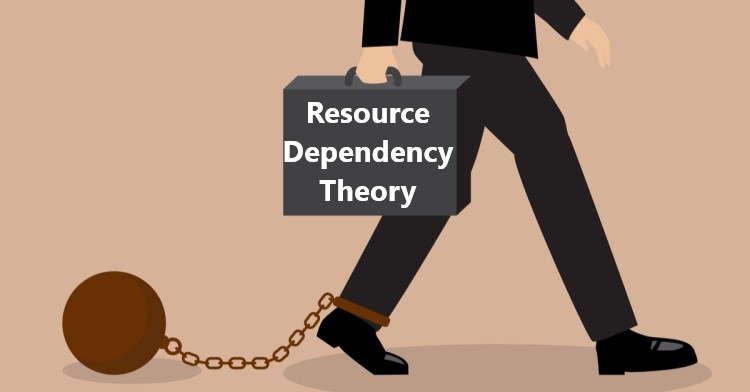
By understanding Resource Dependency Theory, you can make more strategic decisions about building and maintaining essential connections. This knowledge helps you identify areas of high dependency and develop strategies to reduce risks. Organizations often use diversification, partnerships, and internal development to gain more control and flexibility over resources.
Exploring Resource Dependency Theory can help you balance external needs with internal strengths, leading to a more resilient and adaptable organization. With a focus on managing resources wisely, your organization can remain competitive and prepared for changes in a complex environment.
Overview of Resource Dependency Theory (RDT)
Resource Dependency Theory (RDT) suggests that organizations rely on external resources to function. Developed in the 1970s by sociologists Jeffrey Pfeffer and Gerald Salancik, this theory argues that no organization can be entirely self-sufficient. Instead, businesses must actively secure resources—such as capital, talent, technology, and information—from their external environment to sustain operations. This reliance often shapes how companies interact with their surroundings and influences their internal structures.
Your organization’s dependency on external resources affects its behavior, decision-making, and overall strategy. The more significant the resource, the greater the dependency, and the higher the influence on your organization’s choices. For example, if you depend on a few key suppliers for raw materials, you may prioritize forming alliances with them. This helps ensure a stable supply but also reduces the risk of disruption if a supplier fails.
To manage these dependencies, many organizations adopt strategies to reduce their reliance on any single resource or source. Diversification, partnerships, and mergers are just some approaches businesses use to gain control over essential resources. This careful resource management often leads to more flexible decision-making and can improve an organization’s resilience in uncertain markets.
Key Principles of Resource Dependency Theory
Resource Dependency Theory centers on how organizations manage their dependence on external resources. A core principle of this theory is that acquiring necessary resources is essential for stability and growth. However, dependence on external sources can also limit your organization’s autonomy, as those sources can exert influence over your decisions. Therefore, developing strategies to balance resource acquisition with independence becomes essential for sustainable operation.
One way to manage dependency is through diversification. By sourcing resources from multiple suppliers, you reduce the risk of over-reliance on any single entity. This approach can help your organization adapt to supply disruptions or shifts in the market. Additionally, partnerships and alliances offer ways to share resources, distribute risk, and increase your control over essential inputs.
Resource Dependency Theory also emphasizes that external dependencies impact an organization’s internal structure. When you rely heavily on external entities, your organization may adapt by creating specialized roles to manage those relationships. These adjustments shape how resources are secured and influence internal power dynamics, further reinforcing the significance of resource dependency management.
Types of Resources and Dependencies in Organizations
Resource Dependency Theory highlights how organizations rely on different external resources to function efficiently. Financial resources, for example, are often a primary dependency. Without consistent funding, your organization may struggle to maintain operations, expand, or invest in growth. This dependency can lead you to seek investors or loans, which may require strategic concessions or adjustments to meet external expectations.
Human capital is another critical resource. Skilled employees contribute to productivity, innovation, and competitiveness. However, depending on talent availability and retention can impact your organization’s stability. You may need to focus on recruitment strategies, employee development, and retention plans to minimize turnover and maintain productivity.
Technology is also essential in modern organizations. Dependence on up-to-date technology affects efficiency, data security, and customer service. When technological resources are limited, you might experience operational slowdowns or challenges in adapting to industry advancements. This dependency may push you to build partnerships with tech providers or invest in regular upgrades.
Information as a resource is vital for decision-making and strategic planning. Access to accurate market data, customer insights, and industry trends enables better choices and quick adaptation. However, information dependence also means your organization must prioritize data security and continuous research efforts. Under Resource Dependency Theory, understanding these different resource dependencies helps you identify which external relationships to build and how best to align them with your organizational strategy.
Strategies for Managing Resource Dependencies
Resource Dependency Theory suggests that organizations can manage external dependencies by adopting various strategies that minimize risks and increase control. Diversification is one effective strategy. By sourcing resources from multiple suppliers or expanding product lines, you reduce reliance on any single source. This approach provides a safety net, helping your organization maintain stability if one supplier or product becomes unavailable.
Alliances and partnerships offer another way to manage dependency. Forming strategic relationships with other organizations can help you share resources, expertise, and influence. These collaborations can improve your negotiating power, giving you more control over shared resources while reducing individual risk. Mergers and acquisitions go a step further by allowing you to gain direct control over a resource or supply chain. By acquiring another company, you integrate its resources, which can reduce dependency on external entities.
Lobbying is another method organizations use to influence resource availability and market conditions. By engaging in policy advocacy, you can help shape regulations that support your resource needs. This strategy is especially useful for organizations operating in highly regulated industries. Lastly, developing alternative resources, such as creating in-house solutions, can decrease reliance on external providers. Investing in technology to produce certain materials, for example, can help you achieve more operational independence. Each of these strategies under Resource Dependency Theory offers ways to reduce dependency risks, strengthen organizational resilience, and enhance control over essential resources.
Implications of Resource Dependency for Organizational Structure and Power Dynamics
Resource Dependency Theory suggests that dependence on external resources influences both organizational structure and internal power dynamics. When securing critical resources becomes a priority, your organization may restructure to create specialized roles focused on resource acquisition. For example, departments dedicated to procurement, partnerships, or supplier management may gain prominence, as they are tasked with managing essential external relationships.
This resource-focused restructuring can also shift power dynamics within your organization. Teams or individuals responsible for acquiring and managing critical resources often gain more influence. This shift occurs because resource access directly impacts operational stability and growth. As a result, individuals who successfully secure important resources may hold decision-making authority, shaping organizational strategy and priorities.
Resource Dependency Theory also encourages organizations to empower teams to manage dependencies proactively. When facing high-stakes dependencies, many organizations adopt cross-functional teams to navigate these complexities effectively. These teams bring together skills from multiple areas to address resource challenges, promoting collaboration and shared responsibility. This structure enables faster responses to changes in resource availability, helping your organization remain resilient and adaptive.
Challenges and Criticisms of Resource Dependency Theory
Resource Dependency Theory has received criticism for its emphasis on external factors over internal capabilities. Critics argue that focusing primarily on external resources may lead your organization to overlook its own strengths and potential efficiencies. By directing attention outward, you might miss opportunities to improve internal processes or innovate, which are essential for long-term growth and resilience.
Another challenge with Resource Dependency Theory is its impact on adaptability. When an organization heavily invests in managing external relationships, it may become less flexible. This focus can lead to rigid structures and routines that make it harder to adapt when resources change or new market conditions emerge. For instance, a dependency on specific suppliers can limit your ability to pivot quickly, leaving your organization vulnerable to external disruptions.
Finally, critics argue that prioritizing resource acquisition can sometimes stifle innovation. If your organization is too focused on securing resources, it may neglect creative approaches to problem-solving. Over time, this can limit competitive advantage, as you might miss out on developing new products, services, or technologies. Resource Dependency Theory provides valuable insights, but balancing resource acquisition with internal development and innovation is essential for sustained success.
Conclusion
Resource Dependency Theory provides a valuable lens for understanding how external resources impact your organization’s decisions, structure, and strategic direction. By acknowledging dependencies, you can make more informed choices about managing key relationships and reducing risks. Yet, it’s essential to balance external focus with internal development to stay adaptive and innovative.
As you apply Resource Dependency Theory, consider the ways it might impact your organization’s flexibility and internal strengths. While securing external resources is necessary, fostering internal capabilities and encouraging innovation are equally important. By taking a balanced approach, you can better position your organization to thrive in a dynamic environment. Ultimately, Resource Dependency Theory reminds you of the importance of managing both external and internal factors for sustainable success.


